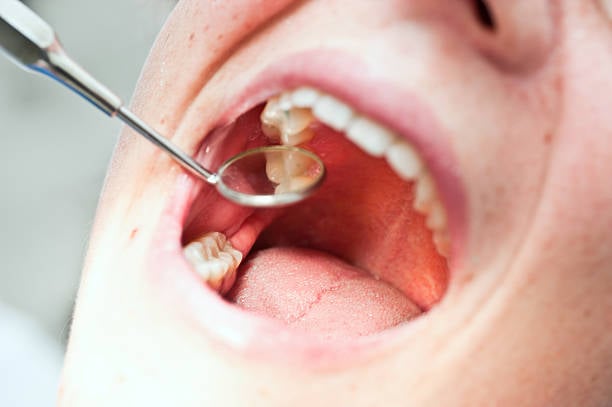Full Mouth Rehabilitation in Dubai has become a comprehensive solution for patients who struggle with multiple oral health issues ranging from damaged teeth to functional bite problems. Two of the most transformative tools in this process are dental veneers and crowns, which restore both aesthetics and function while contributing to the overall success of treatment. Their role is not just cosmetic but also essential in rebuilding structural integrity and long-term oral health.
Understanding Full Mouth Rehabilitation:
Full mouth rehabilitation is a customized treatment plan designed to restore the complete dental structure, ensuring proper function, aesthetics, and comfort. It often combines restorative, cosmetic, and prosthodontic treatments to address worn, missing, or damaged teeth. Veneers and crowns frequently serve as the cornerstone of this process, offering long-lasting solutions for both beauty and strength.
What Are Dental Veneers?:
Dental veneers are thin shells made of porcelain or composite resin, bonded to the front surface of teeth. They are primarily used for cosmetic purposes but can also support functional restoration in rehabilitation cases. Veneers conceal imperfections like discoloration, chips, and uneven shapes while creating a natural-looking smile.
The Function of Veneers in Rehabilitation:
While veneers are often associated with smile makeovers, they also play a critical role in rehabilitation by:
- Restoring symmetry in teeth worn down by grinding.
- Enhancing the alignment and bite by correcting minor positioning issues.
- Improving the appearance of damaged or stained teeth that cannot be treated with whitening alone.
- Offering a conservative alternative to crowns when significant tooth structure remains.
What Are Dental Crowns?:
Dental crowns, often referred to as “caps,” are custom-designed restorations that cover the entire visible portion of a tooth. They provide strength, durability, and protection for teeth that are weakened or heavily restored. In rehabilitation, crowns are indispensable for maintaining the structural stability of compromised teeth.
The Function of Crowns in Rehabilitation:
Crowns serve as both restorative and preventive measures, especially for teeth with substantial loss. Their role includes:
- Protecting teeth after root canal therapy.
- Strengthening teeth weakened by decay or fractures.
- Serving as support for dental bridges.
- Providing durability for molars under heavy chewing forces.
Veneers vs. Crowns: Choosing the Right Option:
While both veneers and crowns contribute significantly to rehabilitation, the choice depends on the condition of each tooth:
- Veneers are ideal for teeth that are mostly healthy but need cosmetic and minor functional adjustments.
- Crowns are recommended when teeth are heavily damaged, structurally weak, or require complete coverage for stability.
How Veneers and Crowns Work Together:
In a full mouth rehabilitation, dentists often combine veneers and crowns for optimal results. For example, anterior teeth may be enhanced with veneers for natural beauty, while posterior teeth receive crowns for strength and durability. This combination ensures a functional bite, balanced aesthetics, and long-lasting oral health.
Materials Used in Veneers and Crowns:
Advancements in dentistry have introduced high-quality materials that enhance both function and appearance. Common options include:
- Porcelain: Offers lifelike translucency and natural appearance.
- Zirconia: Provides superior strength and durability.
- E-max: Known for excellent aesthetics and moderate strength.
- Composite resin: A cost-effective choice, though less durable than porcelain or zirconia.
Benefits of Veneers and Crowns in Rehabilitation:
Patients undergoing rehabilitation with veneers and crowns often experience life-changing improvements, including:
- Restored chewing ability and improved bite.
- A natural-looking, radiant smile.
- Prevention of further tooth damage or loss.
- Enhanced self-confidence and comfort in daily life.
Longevity and Maintenance of Veneers and Crowns:
With proper care, veneers and crowns can last many years. Maintenance includes:
- Practicing good oral hygiene with brushing and flossing.
- Avoiding excessive grinding or clenching, often managed with night guards.
- Regular dental visits for professional cleanings and assessments.
The Role of Technology in Designing Veneers and Crowns:
Modern digital dentistry allows precise planning and fabrication of veneers and crowns. CAD/CAM technology ensures accurate fit, efficient workflow, and personalized results that meet both functional and aesthetic needs of patients undergoing rehabilitation.
Patient Experience During Rehabilitation:
The process of receiving veneers and crowns as part of full mouth rehabilitation is typically staged to ensure comfort and optimal healing. Patients may undergo temporary restorations before the final placement to test aesthetics and function.
Who Can Benefit from Veneers and Crowns in Rehabilitation?:
Individuals with the following concerns often benefit the most:
- Severely worn or fractured teeth.
- Discoloration resistant to whitening treatments.
- Bite imbalances causing functional difficulties.
- Missing teeth requiring crowns as support for implants or bridges.
Final Thoughts:
The role of veneers and crowns in Full Mouth Rehabilitation in Dubai extends far beyond cosmetic enhancement—they are essential tools in restoring health, function, and confidence for patients with complex dental needs. While veneers provide a minimally invasive way to achieve aesthetic perfection, crowns deliver the strength and stability required for compromised teeth. Together, they create a balanced and comprehensive rehabilitation outcome. For patients seeking long-term oral health with a beautiful smile, consulting an experienced dentist ensures the right blend of veneers and crowns tailored to their unique case.

